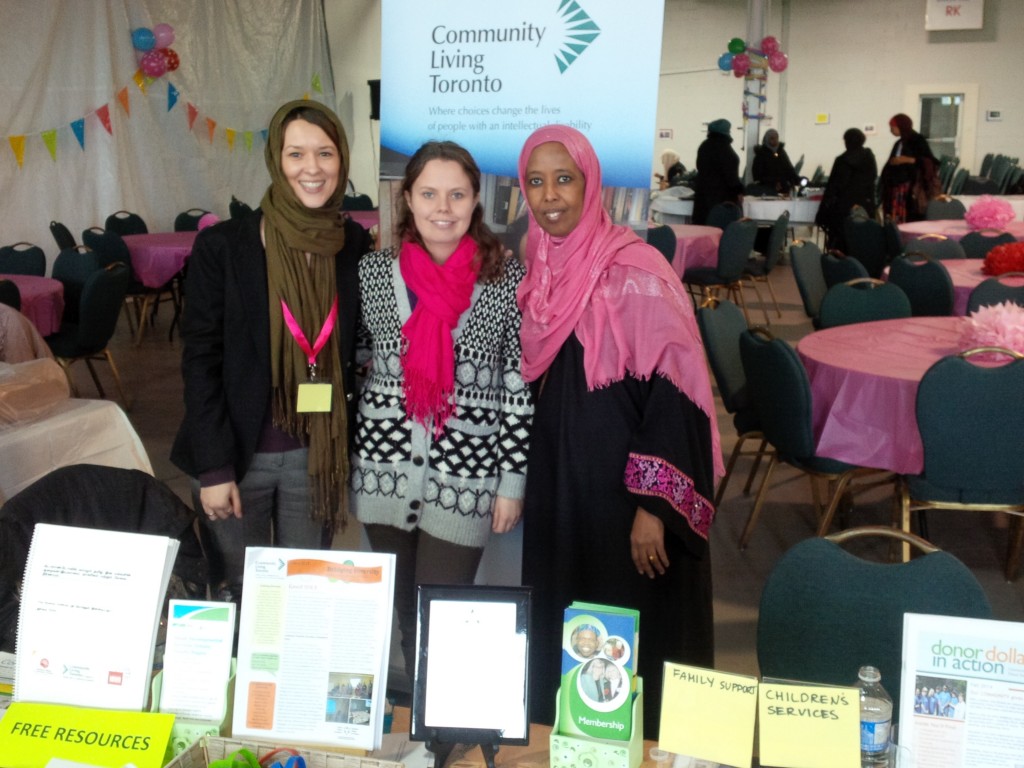By Ilaneet Goren –Diversity Specialist
Last month I celebrated one year on the job. It was a chance to express my gratitude and reflect on the things I have learned. What lessons can I share and take with me into 2015 to help build a culture of equity, diversity and inclusion?
- 1. Diversity is.
Diversity simply describes the reality we live in. Inclusion is how we choose to respond to that reality. We know today that, much like with organizational values or our standards around client safety and confidentiality, diversity applies to every level and position within the organization without exception. This is good because it means we are all in this together. “All together now” is not just a timeless Beatles song. It was also the title of our presentation when Bob Ferguson and I spoke at the 2014 Community Living Ontario conference in October, emphasizing our shared responsibility as a sector and inviting other organizations to join the diversity conversation. The full description of the workshop can be found on the conference website.
- 2. Allies are… everywhere.
It’s impossible to do this work alone. I’ve come to expand my definition of an ‘Ally’ to include anyone who is genuinely supportive of efforts to promote diversity and inclusion. The Bridging Diversity Committee is viewed by many as the main point of contact for diversity-related questions, issues and project ideas. But the Committee isn’t the only place where these conversations are happening. We need more people to have more conversations across the organization to create that ripple effect. Check out this resource page by Mount Sinai Hospital for interactive tools on how to be an ally to diverse communities: www.mountsinai.on.ca/about_us/human-rights/ally/
- 3. It’s ok to say you don’t know.
I must admit that when I first started I worried that the title “Diversity Specialist” might imply I was an expert on diversity. I have a long history of involvement in the field, but can anyone truly be an expert in something so complex and ever-evolving? What I’ve learned is that it’s often better (and more helpful) to realize when you don’t have the answer, and to spend time thinking about the question itself. Teen mathematician and entrepreneur, Jacob Barnett, thinks that knowing the answers can actually prevent us from thinking creatively and authentically. Watch his captivating TEDx Teens talk, “Forget everything you know”: https://www.youtube.com/watch?v=Uq-FOOQ1TpE
- 4. Tools are only good if we use them.
It’s easy to get trapped in thinking that if we have more tools or more resources to help us work across diversity, we will automatically be more inclusive. I’ve realized that it’s really important to address the fundamental question of how we learn and how we integrate new knowledge in everyday practice. Let’s face it, we live in an age of unprecedented access to a vast ocean of information available at our fingertips. Literally (I sometimes joke at my workshops that most of the diversity materials can be searched on Google much like the lyrics to your favourite pop song). Jokes aside, the Bridging Diversity team has worked over the years to compile many helpful resources and links to multilingual and ethno-culturally specific services that can be found on our intranet (SharePoint) and on www.ConnectABILITY.ca. The Bridging Diversity Newsletter, with updates and new resources, comes out every season and is shared through e-mail, website, SharePoint, Twitter, Facebook and hard copies in every regional office. Perhaps our greatest challenge is turning theory into practice.
- 5. Trust the process.
You may remember this scene from the movie Indiana Jones and the Last Crusade: Indy is standing in front of what appears to be an impassable canyon. He needs to get to the other side to save his father, but there is no bridge in sight. An ancient clue instructs him to “take a leap of faith.” As he takes the first step into the abyss, a passageway that was previously camouflaged is revealed to him and he can safely cross to the other side.
I’ve noticed that we may sometimes get uneasy if we don’t have all the parts of our plan figured out. We might be nervous if we can’t imagine exactly what a proposed idea would look like, even if we think it’s a great one. Having a sense of control can give us comfort, and comfort isn’t bad. The things is, innovation and trying new ways of thinking and doing requires stepping outside of our comfort zone. (Worked out OK for Apple…). The process we create for diversity is crucial because it helps sustain it overtime. Trusting the process means believing that we have enough to take the next step forward, so that a path will be revealed.
The Bridging Diversity initiative has been generously supported by the Ontario Trillium Foundation.
![Community Living Toronto [logo]](https://cltoronto.ca/wp-content/themes/communitylivingtoronto2/img/clt-logo.jpg)

